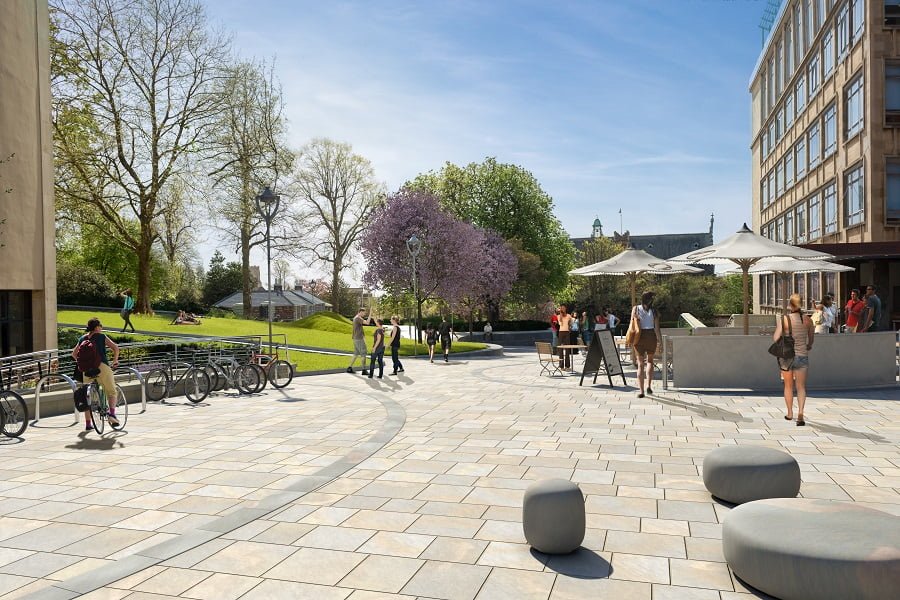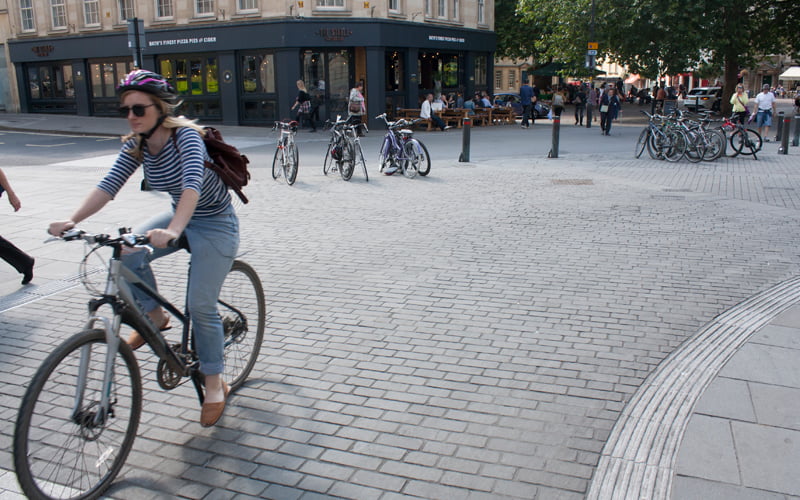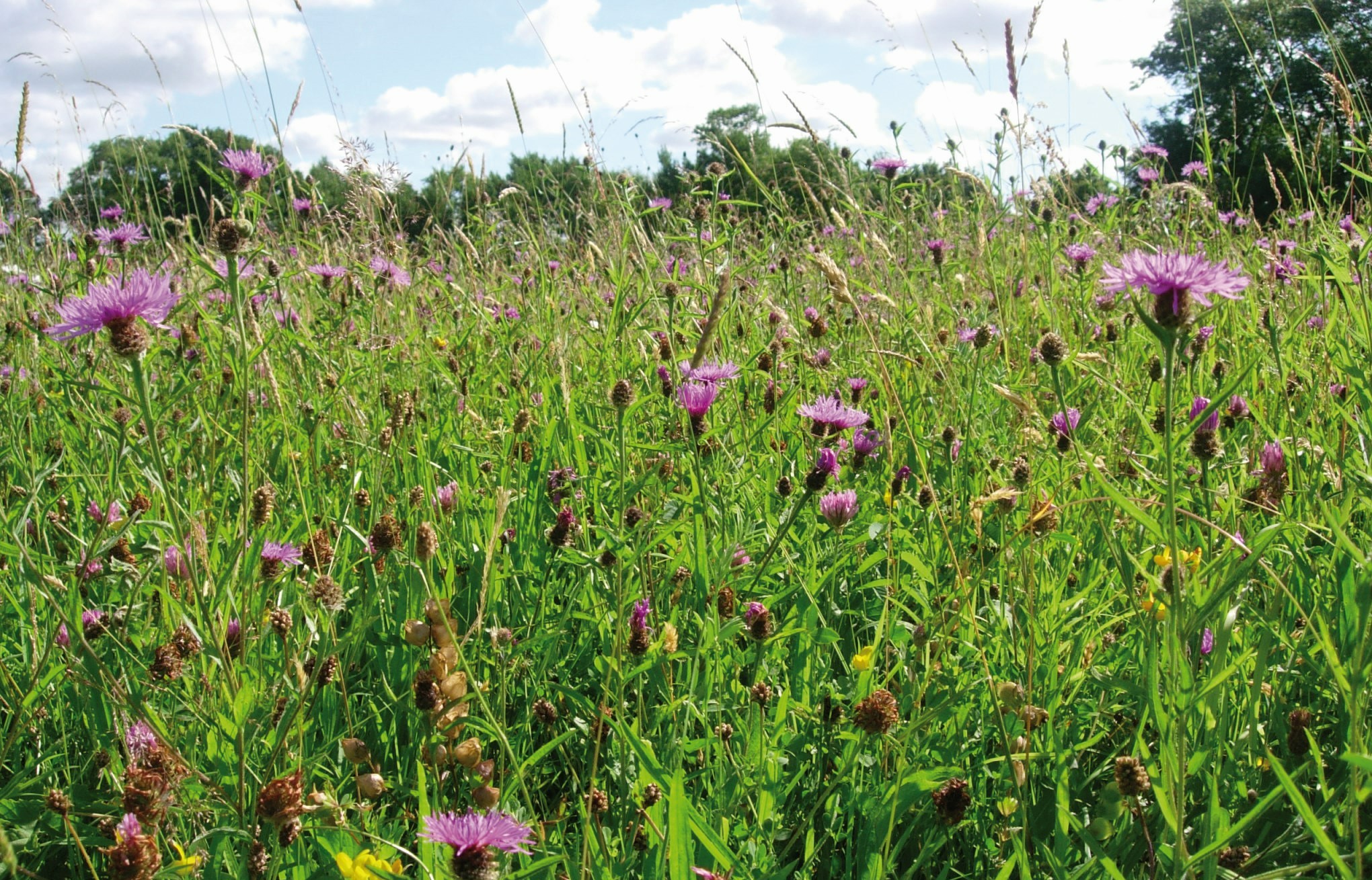Government £2 billion package for cycling & walking
We take a look at some of the implications
As the country prepares to face the challenges of society resuming following the Coronavirus pandemic lockdown, the Government has announced measures as part of £250 million emergency active travel fund for England. The fund will introduce pop-up bike lanes with protected space for cycling, wider pavements for walking, safer junctions, and cycle and bus-only corridors. Changes are already taking place.
This is the first stage of the announced £2 billion investment hoped to usher in a new era for cycling and walking, which in turn is part of £5 billion of new funding for cycling and buses announced previously in February. This included the announcement of over 250 miles of new, high-quality separated cycle routes and safe junctions in towns and cities to be constructed across England.
During the pandemic, there have been unprecedented levels of both cycling and walking. New measures in the immediate term, are intended to provide alternatives to public transport, and encourage walking and cycling.
Response to the pandemic
To enable these changes, statutory guidance has been published in May 2020, which with immediate effect, provides direction to Councils to reallocate road space for significantly increased numbers of cyclists and pedestrians.
It is anticipated there will be further measures to deliver greater uptake in cycling and walking, with the future update to the Cycling and Walking Investment Strategy to be announced later in the summer. Government aims are to double cycling and increase walking by 2025. The measures are understood to include the creation of a long-term budget for cycling and walking, similar to that of roads, and higher standards for permanent infrastructure in England.

Opportunity to rebuild to face challenges of climate crisis
Beyond the immediate and pressing challenges associated with the Coronavirus pandemic and enabling people to make journeys safely, there is the opportunity to reshape the towns and cities where people live and work, to help address the challenges faced from the climate and biodiversity emergency and the ambitions to achieve net-zero carbon by 2050. Sustainable and active modes of transport, including cycling, play an important role in the reduction of emissions and achieving the net-zero target.

Benefits of cycling and walking
A increased uptake in walking and cycling will help reduce emissions. The benefits of incorporating active movement modes into daily life will also contribute to a healthy society. There is an association between physical activity and improvements in health and wellbeing, which include lower death rates, lower risk of heart problems, reduction in obesity rates, and lower rates of poor mental health and depression. The associated costs of unhealthy lifestyles can lead to poor health, which can be debilitating to the individual and more broadly place increased demand on the NHS.
Despite the known benefits that active transport can contribute to health and wellbeing, there has been a shift toward less physically active lifestyles in western societies. This is in part due to the rise of private motorised transport which correspondingly has led to less opportunities for cycling and walking on a day-to-day basis. The rise of private vehicle use can be viewed against the planning of the built environment and transport systems which have favoured its incorporation into everyday use. In comparison to many European countries, levels of cycling in England are much lower due to neglect and the perception that cycling is unsafe and inconvenient.
Retrofitting cycling and walking infrastructure into the built environment
To help reverse this trend and tackle the climate and biodiversity emergency, alternatives to private motorised transport need to be considered. The inclination to cycle is influenced by the convenience and safety of routes. Therefore, when considering the planning and design of cycle networks, the following criteria can be thought about:
- Street access: streets should be bicycle friendly and incorporate traffic calming measures.
- Safety: where conflicts between vehicles and bicycles are unavoidable, measures should be put in place to segregate flows of traffic and give cyclists priority at junctions.
- Continuity: fragmented routes should be avoided. Instead connectivity should be designed providing routes and networks between destinations.
- Directness: the most convenient routes should be provided to cyclists and pedestrians.
- Comfort: routes should be carefully designed to ensure smooth surfaces with suitable gradients and properly maintained.
- Bicycle parking: secure parking at the end of journeys, conveniently located, should be provided.
To reverse the trends of the past, address the challenges of the present, and tackle the challenges of the future, the planning and design of the built environment should encourage the uptake of cycling and walking in a way that makes it the natural choice for people.

Updated Cycling and Walking Investment Strategy
The pledge to invest in cycling and walking infrastructure can only be seen as a positive, as active and sustainable modes of transport have many benefits contributing to improving the quality of life for people and the quality of the environment. Key to this, is the thoughtful planning and design of new infrastructure, and the careful retro-fitting of existing streets and spaces to more evenly share the space. Both new and retrofit projects are needed to benefit society and climate. Action locally impacting on the global scale.
How can we help you?
We have extensive experience of the landscape design and implementation of cyclist and pedestrian friendly infrastructure, both in new build and retro-fit contexts. We can undertake simple feasibility studies and prepare concept designs as well as working closely with engineers and local authorities to complete detailed design and implementation projects.
Do call to speak with one of our team to discuss your project ideas.
References:
- Department for Transport, Office for Low Emission Vehicles, and The Rt Hon Grant Shapps MP: £2 billion package to create new era for cycling and walking https://www.gov.uk/government/news/2-billion-package-to-create-new-era-for-cycling-and-walking
- Department for Transport, HM Treasury, Prime Minister’s Office, 10 Downing Street, The Rt Hon Sajid Javid MP, The Rt Hon Boris Johnson MP, and The Rt Hon Grant Shapps MP: Major boost for bus services as PM outlines new vision for local transport https://www.gov.uk/government/news/major-boost-for-bus-services-as-pm-outlines-new-vision-for-local-transport
- Urban Design Group: Fast Urban Change for Life-Saving Streets http://www.udg.org.uk/content/fast-urban-change-life-saving-streets
- Sustrans: The Role of Active Travel in Improving Health – Toolkit Part 1: How active travel can improve health and wellbeing in the workforce https://www.sustrans.org.uk/media/4471/4471.pdf
- Hugh Barton, Marcus Grant & Richard Guise: Shaping Neighbourhoods – For Local Health & Global Sustainability
- English Partnerships, The Housing Corporation: The Urban Design Compendium







